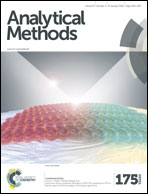Real-time monitoring of contractile properties of H9C2 cardiomyoblasts by using a quartz crystal microbalance
Abstract
Conventional cardiac physiology experiments investigate in vitro beat frequency using cells isolated from adult or neonatal rat hearts. Recently, there is an increased interest in measuring the mechanical properties of cardiomyocytes including their contraction force and viscoelasticity. In this study, we used a quartz crystal microbalance (QCM) to study the viscoelasticity of populations of H9C2 cardiomyoblasts under different stimuli. First, we observed the effects of osmotic pressure and found that H9C2 cardiomyoblasts became stiffer under hypertonic conditions and softer under hypotonic conditions. Then we compared the effects of two inotropic cardiovascular drugs, and found that the positive inotropic drug, isoprenaline (ISO), made H9C2 cells stiffer and the negative inotropic drug, verapamil (VRP), made cells softer. For the dosage ranges tested for ISO (12.5–125 nM) and VRP (12.5–250 nM), we also observed that the higher the ISO concentration, the stiffer were the cells; and the higher the VRP concentration, the softer were the cells. Although H9C2 cardiomyoblasts do not have the beating function, our results showed that they still have the ability to contract and expand. Moreover, they are homogeneous and immortal, making them a potentially suitable cell model for the study of contraction and relaxation characteristics of cardiomyocytes, and for pre-assessment and toxicity testing of cardiovascular drugs where high-throughput and repetitions are required. In addition, we demonstrated that the QCM is a potentially useful tool for assessing the contractility of populations of cardiomyocytes.


 Please wait while we load your content...
Please wait while we load your content...